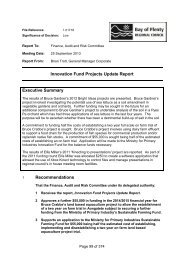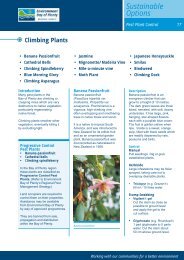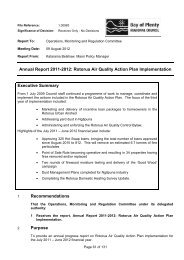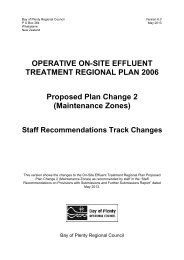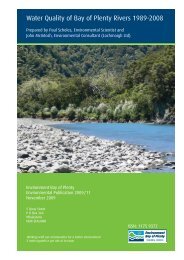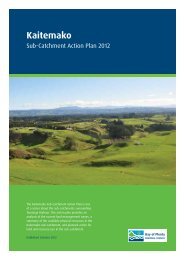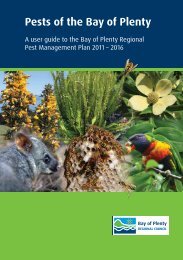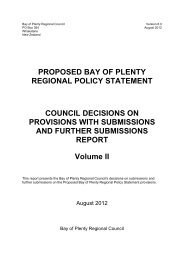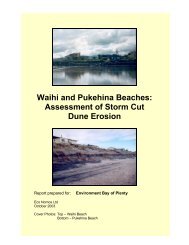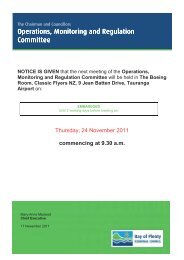Odour Threshold Investigation 2012 - Bay of Plenty Regional Council
Odour Threshold Investigation 2012 - Bay of Plenty Regional Council
Odour Threshold Investigation 2012 - Bay of Plenty Regional Council
Create successful ePaper yourself
Turn your PDF publications into a flip-book with our unique Google optimized e-Paper software.
The standardisation <strong>of</strong> DDO in Australasia and Europe has only occurred in the past ten to<br />
twenty years. The variability in the measurement method before standardisation means that<br />
earlier data are not necessarily comparable to the current measurements 1 . The<br />
recommended method for DDO in New Zealand (and Australia) is AS/NZS 4323.3:2001 2 ,<br />
which was based on the European draft standard 3 . DDO and other techniques for odour<br />
measurement are described in detail in a central government technical report 4 , along with<br />
other less commonly used techniques, such as electronic instruments and chemical<br />
measurement <strong>of</strong> odorous compounds.<br />
This report follows the structure outlined below:<br />
Part 2 – Background information relating to how the human olfactometry system detects<br />
odour.<br />
Part 3 - A brief overview <strong>of</strong> H 2 S health effects.<br />
Part 4 - H 2 S odour sources and monitoring data for ambient H 2 S within the region.<br />
Part 5 - A summary <strong>of</strong> international and national odour threshold data for H 2 S.<br />
Part 6 - A description <strong>of</strong> the methodology used for this investigation.<br />
Part 7 - Statistical analysis <strong>of</strong> the measured data.<br />
Part 8 - A discussion <strong>of</strong> results and conclusions from the investigation.<br />
Data presented in this report will show different units. Quoted values will be as published,<br />
otherwise the unit convention will be to use μg/m 3 . Conversion between ppb and μg/m 3 can<br />
be undertaken using the following equation, H 2 S(μg/m 3 ) = 1.52 * H 2 S(ppb) at 0°C.<br />
1<br />
2<br />
3<br />
4<br />
Victorian EPA, 2002, Comparison <strong>of</strong> EPA approved odour measurement methods, Publication SR1.<br />
Australian/New Zealand Standard, 2001, Stationary Source Emissions. Part 3: Determination <strong>of</strong> <strong>Odour</strong><br />
Concentration by Dynamic Olfactometry.<br />
European Committee for Standardisation, 2003, Air quality - Determination <strong>of</strong> odour concentration by<br />
dynamic olfactometry, EN 13725.<br />
Ministry for the Environment, 2002c, Review <strong>of</strong> <strong>Odour</strong> Management in New Zealand: Technical Report.<br />
Air quality technical report no. 24. Ministry for the Environment, Wellington, New Zealand.<br />
2 Environmental Publication <strong>2012</strong>/06–A review <strong>of</strong> odour properties <strong>of</strong> H 2 S odour threshold investigation <strong>2012</strong>



